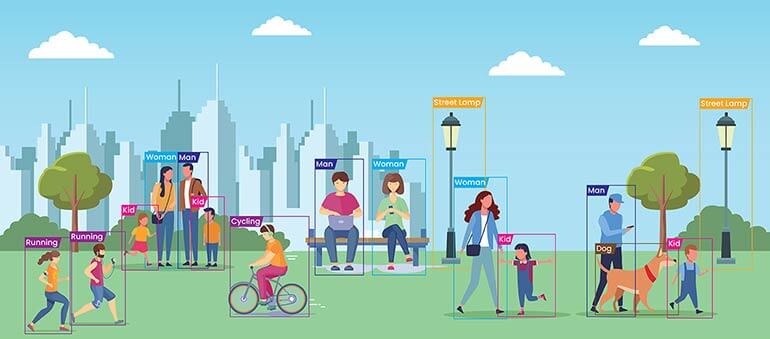10 Powerful eCommerce Data Collection Strategies & Examples
The success of AI and ML projects depends on the quality of training datasets. Understanding and utilizing the differences between data annotation and labeling is the key to building robust and accurate AI and ML models for realizing AI’s full potential.
Table of Contents
The success of any AI or ML project depends on high-quality training data. But for many companies, acquiring this data and preparing it for interpretation by machines can be a hurdle. This is where data annotation and labeling services play a role. However, with these two terms often used interchangeably in the industry, it’s crucial to understand the subtle differences between these two processes to ensure you take the right approach, or choose the right partner, for your specific project needs.
A study by MIT researchers highlighted that an AI model trained on well-annotated data could achieve accuracy levels up to 20% higher than those trained on poorly annotated datasets. This emphasizes the critical role of precise data annotation and labeling in reducing errors and enhancing the performance of AI systems.
So, what gives you smart data to train your AI and ML algorithms, data annotation, or labeling? Let’s take a closer look at data annotation and data labeling in relation to their significance, processes, and the role they play in enhancing AI and ML models.
Data labeling is the process of manually assigning relevant labels or categories to data points to improve their accuracy and effectiveness for machine learning models. It involves a human-labeled data set, which can be time-consuming but can result in significant improvements in model performance. The labeled data is then used as input into a machine learning algorithm.

Data annotation is the action of adding meaningful and informative tags to a dataset, making it easier for machine learning algorithms to understand and process the data. Previously, data annotation was not as crucial as it is now because data scientists used structured data which did not require many annotations. During the last 5-10 years, data annotation became more critical for machine learning systems so they can work effectively.

Data annotation and data labeling are terms often used interchangeably in the context of machine learning and artificial intelligence. However, there can be subtle differences in their usage and implications, depending on the context or the specific processes involved.
| Data Labeling | Data Annotation | |
|---|---|---|
| Definition | Data Labeling It is the process of assigning a specific classification, or label, to a piece of data or information. | Data Annotation It is the process of adding labels or tags to data to provide additional context to it. |
| Purpose | Data Labeling To train machine learning models with instructions about what each data point represents. | Data Annotation To help machines comprehend and interpret various forms of data, such as text, video, images, or audio. |
| Objective | Data Labeling It focuses on categorizing or classifying data into predefined classes, essential for supervised learning. It’s used in applications like sentiment analysis and object recognition. | Data Annotation It is detailed and context-rich, suitable for complex tasks requiring nuanced understanding, such as computer vision and medical imaging. It involves tasks like drawing bounding boxes or outlining semantic segments. |
| When to use | Data Labeling Identify and tag data samples commonly used in the context of training machine learning (ML) models. | Data Annotation It is required for a variety of use cases, including computer vision, natural language processing, and speech recognition. |
| Capacity |
Data Labeling
|
Data Annotation
|
| Process | Data Labeling Data labeling involves categorizing images into ‘cat’ or ‘dog’, to more complex scenarios, like identifying sentiments in text data as positive, negative, or neutral. | Data Annotation Data annotation involves creating labels or annotating specific features within an image, audio file, or text document. |
| Complexity and Detail | Data Labeling Labeling is generally more straightforward, potentially amenable to automation, and focuses on assigning predefined tags to data points. | Data Annotation Annotation is more complex, often requiring human judgment to capture detailed attributes within the data. |
| Types |
Data Labeling
|
Data Annotation
|
| Tools used |
Data Labeling
|
Data Annotation
|
| Market Size | Data Labeling The global data labeling market size is expected to expand at a compound annual growth rate (CAGR) of 26.6% from 2021 to 2028. | Data Annotation The demand for accurately annotated datasets is expected to reach USD 556.67 billion by 2026, growing at a CAGR of 39.47% from 2021 to 2026. |
Choosing between data labeling and data annotation depends on your project’s complexity and the level of detail required by your AI or ML model. Both processes are crucial in preparing training data for machine learning algorithms, yet they cater to different needs and complexities within AI and ML projects. Here are the nine key considerations for choosing between annotation and labeling:

While data labeling and data annotation might seem interchangeable briefly, they play distinct roles in the world of AI and machine learning. Data labeling helps categorize, while data annotation provides depth and context. As the demand for more sophisticated AI models grows, the importance of understanding and effectively using both processes grows. Knowing the distinction ensures that your machine learning projects are built on a strong and accurate foundation.
What’s next? Message us a brief description of your project.
Our experts will review and get back to you within one business day with free consultation for successful implementation.
Disclaimer:
HitechDigital Solutions LLP and Hitech BPO will never ask for money or commission to offer jobs or projects. In the event you are contacted by any person with job offer in our companies, please reach out to us at info@hitechbpo.com
Leave a Reply